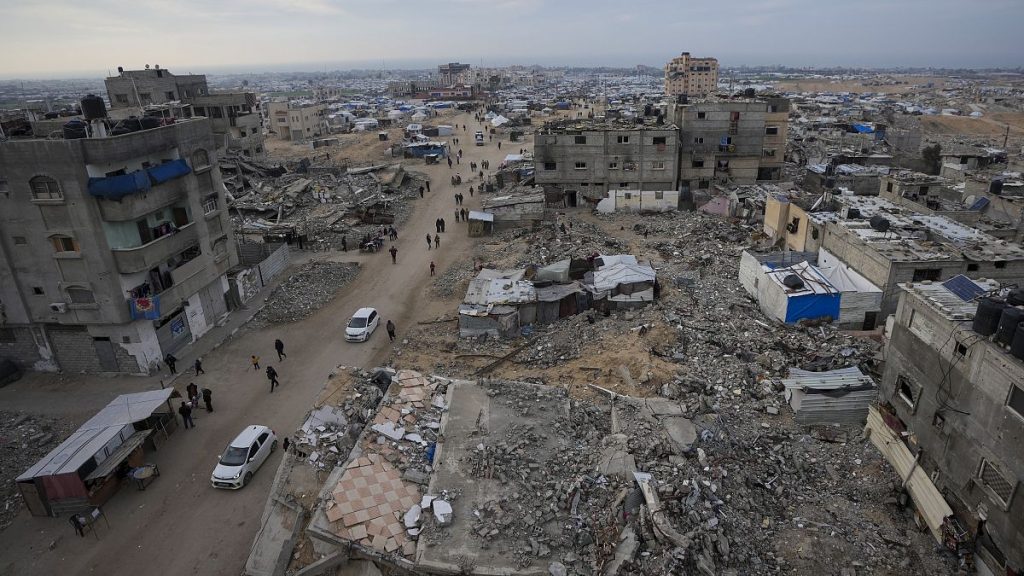The United States has notified Congress of its intention to sell a substantial weapons package to Israel, valued at $8 billion. This sale comes amidst the ongoing conflict between Israel and Hamas in Gaza, a conflict that has raged for over fifteen months. The package encompasses a range of weaponry, including medium-range air-to-air missiles for aerial defense, 155mm artillery shells for long-range strikes, Hellfire AGM-114 missiles, 500-pound bombs, and other unspecified munitions. While some of these arms may be drawn from existing US stockpiles, the majority are anticipated to require a delivery timeframe spanning from one to several years. This proposed sale significantly adds to the already substantial military aid provided to Israel since the war’s commencement in October 2023, which has now reached at least $17.9 billion.
This notification to Congress, however, represents only a preliminary step in the arms sales process. It allows the leadership of the House Foreign Affairs Committee and the Senate Foreign Relations Committee to scrutinize the proposed package. This oversight is particularly relevant given the existing controversy surrounding US arms sales to Israel in light of the escalating Palestinian civilian casualties. Public criticism, including demonstrations and Congressional efforts to block offensive weapons sales, reflects growing concern over the conflict’s humanitarian impact.
The Biden administration has previously demonstrated sensitivity to this issue, pausing a shipment of 2,000-pound bombs to Israel in May due to concerns about their potential use in Rafah and the resulting civilian casualties. While the administration has also pressed Israel to increase humanitarian aid to Gaza, it has, as of November, refrained from restricting arms transfers, a measure it had previously threatened if the situation did not improve. This latest weapons sale proposal suggests a shift in the administration’s approach, potentially reflecting a prioritization of Israel’s defensive capabilities amidst the continuing conflict.
Simultaneously with the arms sale announcement, the conflict in Gaza continues unabated. Recent Israeli airstrikes have claimed the lives of at least 21 people, including children, even as renewed ceasefire negotiations are underway in Qatar. Public pressure for a ceasefire is also mounting within Israel, with large demonstrations taking place across the country. This pressure is further intensified by the release of a video by Hamas showing Israeli soldier and hostage, Liri Albag, expressing her distress and highlighting the dire conditions of her captivity.
Albag’s video serves as a stark reminder of the human cost of the conflict and the plight of the remaining hostages held in Gaza. Her plea for help adds a poignant dimension to the ongoing negotiations, underscoring the urgency of reaching a resolution. Prime Minister Netanyahu’s communication with Albag’s parents, assuring them of ongoing efforts to secure the hostages’ release, reflects the political sensitivity surrounding this issue and the pressure on the Israeli government to bring the captives home. The hostages remain a key element in the conflict, adding a layer of complexity to the already challenging ceasefire discussions.
The war in Gaza, initiated by a Hamas incursion into southern Israel in October 2023, has resulted in widespread devastation and displacement within the Gaza Strip. The conflict has claimed the lives of over 45,500 Palestinians, according to the Hamas-run health ministry, although these figures do not differentiate between combatants and civilians. With an estimated 90% of Gaza’s 2.3 million population displaced, often multiple times, the humanitarian crisis continues to deepen. The ongoing ceasefire talks, mediated by Qatar, Egypt, and the United States, face significant hurdles, including the entrenched positions of both Israel and Hamas. While Israel insists on the destruction of Hamas, Hamas demands the complete withdrawal of Israeli forces from Gaza. This fundamental disagreement underscores the complexity of the conflict and the difficulty of achieving a lasting peace.














